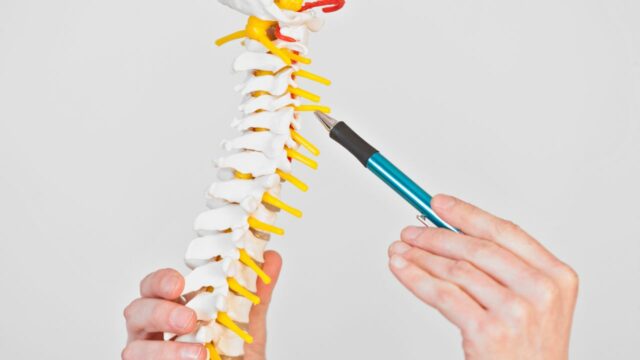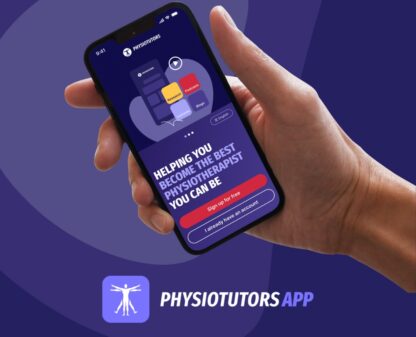Cervical Radiculopathy

Introduction
- Cervical radiculopathy includes cervical radicular pain and/or radiculopathy, with disc herniation being the most common cause.
- Radicular pain involves ectopic discharges from a dorsal root, while radiculopathy involves conduction block along a spinal nerve or its roots
Epidemiology
- Mechanical compression of the nerve root by factors like hypertrophied facet joints, disc protrusion, or spondylotic spurring leads to radiculopathy.
- Incidence: Annual incidence of 82.3 new cases per 100,000 people, with males (107) more affected than females (64); C7 nerve root most commonly affected.
Clinical Picture
-
Signs & symptoms include varying degrees of arm pain, paresthesia, sensory loss, motor weakness, and decreased reflexes, often with neck pain of lesser intensity.
Examination
- Tests include Upper Limb Tension Tests, Spurling’s Test, Cluster of Wainner, Cervical Distraction Test, Shoulder Abduction Sign, Valsalva Maneuver, Arm Squeeze Test, and Neck Tornado Test.
- Neurological examination focuses on assessing hyporeflexia, hypoesthesia, and paresis using Upper Limb Deep Tendon Reflexes and dermatome/myotome testing.
Treatment
- Treatment aims to address modifiable negative prognostic factors and educate patients about the benign course of cervical radicular syndrome.
- Physiotherapy interventions focus on pain reduction, disability management, and improving range of motion and joint mobility.
- Manual therapy, neck and upper limb strengthening exercises, thoracic manipulation, neural tissue management, and nerve gliding exercises are effective treatments.
- Cervical traction may be considered, especially when added to other physiotherapy procedures, for pain reduction.
- Surgical treatment may show more rapid improvement in the short term but yields similar long-term results to physiotherapy alone, suggesting physiotherapy should precede surgery.
References
Abbed, K. M., & Coumans, J. V. C. (2007). Cervical radiculopathy: pathophysiology, presentation, and clinical evaluation. Neurosurgery, 60(suppl_1), S1-28.
Bogduk, N. (2009). On the definitions and physiology of back pain, referred pain, and radicular pain. PAIN®, 147(1-3), 17-19.
Bono, C. M., Ghiselli, G., Gilbert, T. J., Kreiner, D. S., Reitman, C., Summers, J. T., … & Toton, J. F. (2011). An evidence-based clinical guideline for the diagnosis and treatment of cervical radiculopathy from degenerative disorders. The Spine Journal, 11(1), 64-72.
Engquist, M., Löfgren, H., Öberg, B., Holtz, A., Peolsson, A., Söderlund, A., … & Lind, B. (2013). Surgery versus nonsurgical treatment of cervical radiculopathy: a prospective, randomized study comparing surgery plus physiotherapy with physiotherapy alone with a 2-year follow-up.
Keating, L., Treanor, C., Sugrue, J., Meldrum, D., Bolger, C., & Doody, C. (2019). A randomised controlled trial of multimodal physiotherapy versus advice for recent onset, painful cervical radiculopathy–the PACeR trial protocol. BMC musculoskeletal disorders, 20, 1-8.
Kim, D. G., Chung, S. H., & Jung, H. B. (2017). The effects of neural mobilization on cervical radiculopathy patients’ pain, disability, ROM, and deep flexor endurance. Journal of back and musculoskeletal rehabilitation, 30(5), 951-959.
Kuijper, B., Tans, J. T. J., Schimsheimer, R. J., Van Der Kallen, B. F. W., Beelen, A., Nollet, F., & De Visser, M. (2009). Degenerative cervical radiculopathy: diagnosis and conservative treatment. A review. European journal of neurology, 16(1), 15-20.
Lee, M. W. L., McPhee, R. W., & Stringer, M. D. (2008). An evidence‐based approach to human dermatomes. Clinical Anatomy: The Official Journal of the American Association of Clinical Anatomists and the British Association of Clinical Anatomists, 21(5), 363-373.
Nee, R. J., Vicenzino, B., Jull, G. A., Cleland, J. A., & Coppieters, M. W. (2012). Neural tissue management provides immediate clinically relevant benefits without harmful effects for patients with nerve-related neck and arm pain: a randomised trial. Journal of physiotherapy, 58(1), 23-31.
Peolsson, A., Söderlund, A., Engquist, M., Lind, B., Löfgren, H., Vavruch, L., … & Öberg, B. (2013). Physical function outcome in cervical radiculopathy patients after physiotherapy alone compared with anterior surgery followed by physiotherapy: a prospective randomized study with a 2-year follow-up.
Persson, L. C. G., Moritz, U., Brandt, L., & Carlsson, C. A. (1997). Cervical radiculopathy: Pain, muscle weakness and sensory loss in patients with cervical radiculopathy treated with surgery, physiotherapy or cervical collar A prospective, controlled study. European Spine Journal, 6, 256-266.
Romeo, A., Vanti, C., Boldrini, V., Ruggeri, M., Guccione, A. A., Pillastrini, P., & Bertozzi, L. (2018). Cervical radiculopathy: effectiveness of adding traction to physical therapy—a systematic review and meta-analysis of randomized controlled trials. Physical Therapy, 98(4), 231-242.
Roth, D., Mukai, A., Thomas, P., Hudgins, T. H., & Alleva, J. T. (2009). Cervical radiculopathy. Disease-a-month: DM, 55(12), 737-756.
Thoomes, E. J. (2016). Effectiveness of manual therapy for cervical radiculopathy, a review. Chiropractic & manual therapies, 24(1), 1-11.
Young, I. A., Pozzi, F., Dunning, J., Linkonis, R., & Michener, L. A. (2019). Immediate and short-term effects of thoracic spine manipulation in patients with cervical radiculopathy: a randomized controlled trial. journal of orthopaedic & sports physical therapy, 49(5), 299-309.
Van Zundert, J., Huntoon, M., Patijn, J., Lataster, A., Mekhail, N., & Van Kleef, M. (2011). Cervical radicular pain. Evidence‐Based Interventional Pain Medicine: According to Clinical Diagnoses, 18-30.


